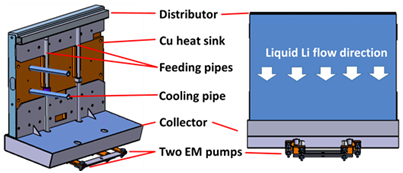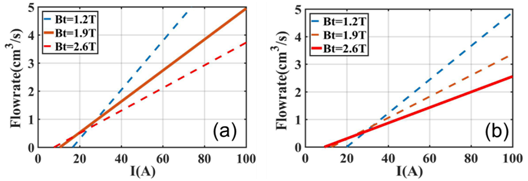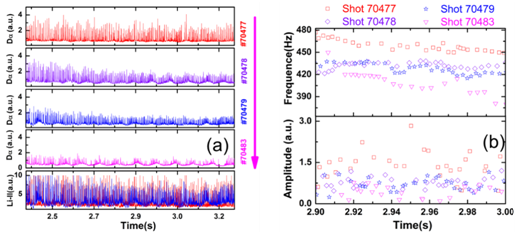
count: [2018-12-15] [Close]
As the closest component to superhot plasma, the first wall is one of the most crucial parts in fusion devices. It has to withstand the high heat flux and the erosion of runaway plasma particles, endure the long neutron irradiation, and at the same time cause the least impurity pollution to the core plasma from the interaction between plasma and wall materials.
The past decades have seen the development of different first wall materials, such as carbon, tungsten and lithium. Efforts are still needed to find better solutions.
Scientists in Institute of Plasma Physics, Chinese Academy of Sciences (ASIPP) recently found that flowing liquid lithium (FLiLi) wall might be applicable to future fusion reactors, based on their more than four years’ research and experiment on FLiLi on EAST tokamak.
FLiLi has strong ability of withstanding high heat flux and self-repair, thus the application of FLiLi on fusion device is of increasing importance and attention.
ASIPP scientists upgraded the FLiLi limiter which they developed in 2014. Encouraging results were obtained from the experiments during EAST plasma discharges.
It was found that the liquid Li coverage was uniform, no macroscopic surface erosion was caused by plasma materials interaction; 55% of the discharge heat flux was effectively removed using high pressure He cooling during ohmic discharges; and FLiLi demonstrated the ability to restart Li flow for another experiment one week after the previous.
Scientists observed during EAST experiment that, with increasing Li flow rate, fuel particle recycling and Fe impurity radiation gradually decreased, and that plasma performance slightly improved with no impact on the edge tungsten influx. No obvious Li bursts appeared during operation with up to about 4.5MW auxiliary heating power with peak heat flux reaching ~ 4MW/m2 on FLiLi.
In addition, a gradual mitigation of edge localized mode (ELM) activity was observed with FLiLi operation.
For the first time, short-lived ELM-free phases were observed in EAST during FLiLi insertion.
‘The series of results expand the possibility of applying FLiLi wall on future fusion reactor,’ explained ZUO Guizhong, who recently published the results on Nuclear Fusion journal. (MENG Xiancai & ZUO Guizhong report)
Airticle link: http://iopscience.iop.org/article/10.1088/1741-4326/aaedcb/meta

2nd generations FLiLi for EAST

Relationship between Li flow rate and EM driven current with various toroidal magnetic fields calculated by using MHD equation 2, (a) in 2014 using one EM pump and feeding pipe and (b) in 2016 using two EM pumps and feeding pipes.

Shown is the ELM activity during the FLiLi operation with the same EM driven current, similar fueling and limiter position, (a)Upper divertor Dα signal of shots 70477, 70478, 70479 and 70483, and Li-II line emission from 70477 and 70479, and (b)ELM frequency and amplitude calculated by Dα signal from 2.9 to 3s.